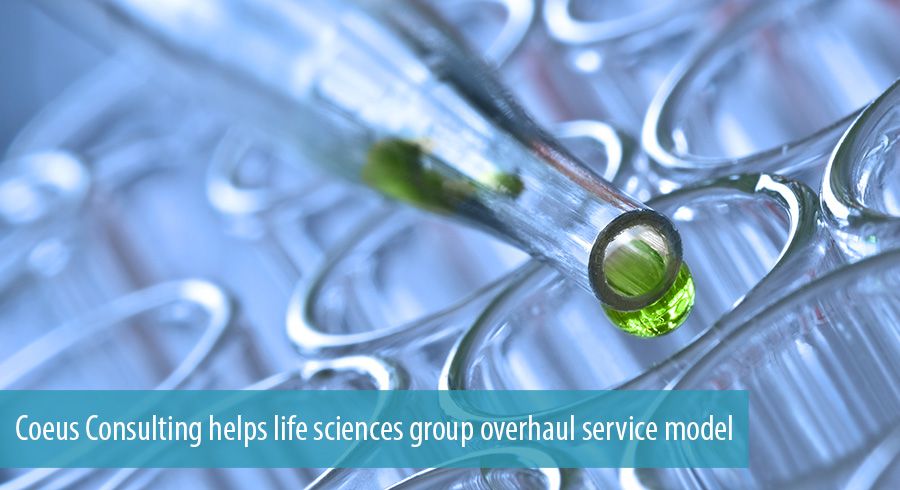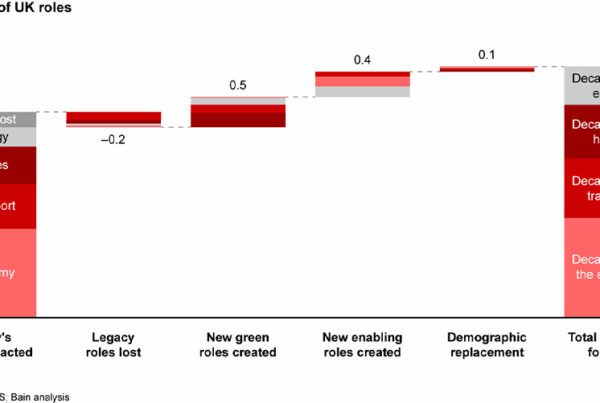A global life sciences group has set out to overhaul its internal service delivery model, with the support of Coeus Consulting. The multinational collaborated with the advisory firm to design and roll out a new service blueprint, which has bumped up end-user satisfaction levels and delivered double-digit cost savings.
Life sciences companies face mounting pressure from many directions, including increasing regulatory requirements, nonstop technological advances, and intense pricing pressure. On top of this, the unprecedented events of the pandemic have provided more reason to modernise compliance, and elevate the value and partnerships within companies, and with external stakeholders.
In the case of one Global Head of End User Services at a global life sciences business, they faced a perfect storm in these conditions. The multinational in question is one of the larger players in the life sciences industry, and budgets were being cut, service improvements had stalled, compliance with global standards had become inconsistent, while user experience was severely limited.

Even when the client made improvements, such as providing localised language service desks, weaknesses remained in the service model, such as poor user experience. The challenge was to transform service while reducing cost – with users spanning more than 100 countries including very expensive locations. At the same time, though, the Global Head of End User Services at the company faced more challenges. He need to meet a 10% budget task, find a way to standardise services, and do all of this during Covid-19 – meaning much work had to go remote.
Consultants are playing a key role in life sciences meet these demands. In this case, Coeus Consulting was asked to design and test a new service blueprint to improve user experience.
Making a plan
As the improvement of the service model in question was only about internal service delivery, its end users were all internal employees. Coeus’ starting point was a Current State Assessment, interviewing key stakeholders, including employees, and reviewing operational documentation.
It also Coeus took a data driven approach to understand the workload content, and understand how throughputs could be decentralised to more local delivery for the client’s varied geography. Analysing a year of ticket data, the firm found numerous corruptions and inconsistencies in the system. In order for a new proposed service model to work effectively, Coeus designed a new governance structure to address these inconsistencies and promote continuous improvement on a global basis.
Coeus then carried out a second stage analysis, allowing the client to narrow down to a favoured option for a solution; offering a choice between mix of walk-in centres, full or part-time on-site presence and virtual walk-in centres. On the basis of that feedback, Coeus developed an outline business case including bottom-up global model to cost workloads on a geographically dispersed basis, synthesise supplier margins and estimate the costs of change.
In order to implement its new internal delivery model, the client would also need to find the right supplier for its system. It was expected that the incumbent supplier would struggle with such a radical shift, particularly as they had a vested interest in leveraging the existing shared resources and infrastructure but were pleasantly surprised that they embraced the challenge.
To that end, Coeus’ consultants supported a tender process to define requirements, set the service metrics and lot up the scope according to geography, scale and language drivers. Eventually, this enabled the consultancy to bring a broad and experienced skill set for the new blueprint. This skill set spanned data analytics, service management operating model assessment/design, solution design, business case derivation, contract and tender support.
Results
Implementation of the new blueprint has recently completed. It is already having a material effect on the operation of the company.
According to Coeus, shared service centres are inherently more vulnerable due to their concentration of resources. As a result, the distributed model in the blueprint has in-built flexibility to shift workloads in the event of a local disruptive event. At the same time, due to being developed and implemented during the Covid-19 pandemic, a side effect of the process is that services are now much more resilient to global or local impacts.
User experience has been drastically enhanced. First Time Fix rates for problem tickets have risen to 74% in the new system, from 35% previously, while and customer satisfaction ratings are at an all-time high.
At the same time, 75% of staff using the system now have direct access to engineers or support pods, rising from 60%, making for more efficient problem solving. And remote support for the remaining 25% of smaller sites is delivered by the better skilled Unified Workforce, often in native language.
All this means that the transformation is on target to hit cost savings targets larger than the 10% initially mentioned. A release from Coeus noted that business case savings could hit 22% over the five-year term.
Commenting on the work, John Gorrell, Associate Director, Coeus Consulting, said, “I might summarise the project as a piece of ‘unconventional wisdom’. Re-assessing the intuitive benefits of centralised shared services really paid off, but taking a data driven approach meant we had high levels of confidence in proposing such a radical change. Luckily we had a great client who also had a vision to make a step change in customer experience and supported us throughout.”




